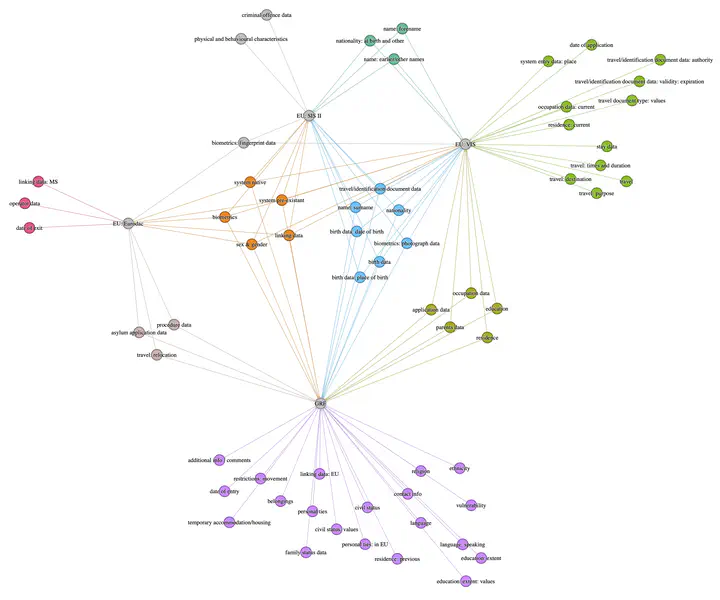The Ontology Explorer: A method to make visible data infrastructures for population management

Abstract
This article introduces the methodology of the ‘Ontology Explorer’, a semantic method and JavaScript-based open-source tool to analyse data models underpinning information systems. The Ontology Explorer has been devised and developed by the authors, who recognized a need to compare data models collected in different formats and used by diverse systems. The Ontology Explorer is distinctive firstly because it supports analyses of information systems that are not immediately comparable and, secondly, because it systematically and quantitatively supports discursive analysis of ‘thin’ data models – also by detecting differences and absences through comparison. When applied to data models underpinning systems for population management, the Ontology Explorer enables the apprehension of how people are ‘inscribed’ in information systems, which assumptions are made about them, and which possibilities are excluded by design. The Ontology Explorer thus constitutes a methodology to capture authorities’ own imaginaries of populations and the ‘scripts’ through which they enact actual people. Furthermore, the method allows the comparison of scripts from diverse authorities. This is exemplified by illustrating its functioning with information systems for population management deployed at the European border. Our approach integrates a number of insights from early infrastructure studies and extends their methods and analytical depth to account for contemporary data infrastructures. By doing so, we hope to trigger a systematic discussion on how to extend those early methodical innovations at the semantic level to contemporary developments in digital methods.